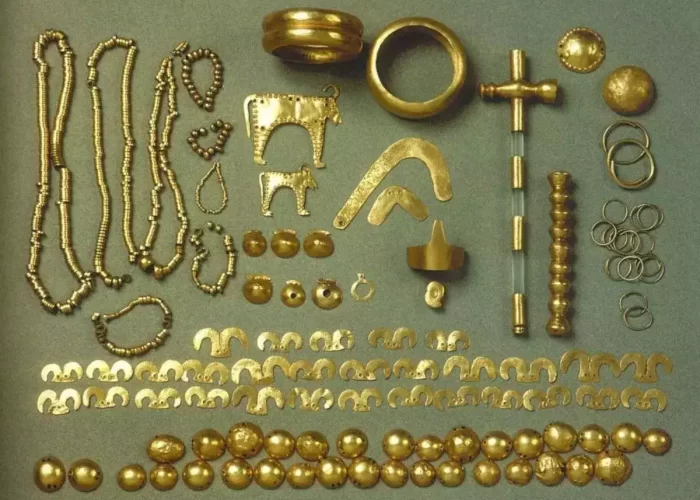Tracing the Origins of Gold and Diamond Jewelry
Gold and diamonds are some of the most beloved materials used in jewellery, appreciated for their timeless beauty and value. While these precious materials have been used in jewelry for thousands of years, the exact origins of the first gold and diamond pieces are shrouded in mystery. In this blog, we will delve into the fascinating history of gold and diamond jewelry, exploring their origins, significance, and evolution over time.

First Gold Jewelry Ever Made?
The exact origin of the first gold jewelry is unknown, as it was likely created in prehistoric times before written records were kept. However, archaeological evidence suggests that the first gold jewelry was made around 6,000 years ago in what is now modern-day Bulgaria.
Archaeologists have uncovered a hoard of gold jewelry from the Chalcolithic era (also known as the Copper Age) in the Varna Necropolis, which is a burial site in Bulgaria. The jewelry includes necklaces, bracelets, and earrings made from gold and precious stones such as turquoise and lapis lazuli. These pieces were likely worn by high-status individuals or used for ceremonial purposes.
Other early examples of gold jewellery have been found in ancient Egypt, where it was believed to have symbolic and religious significance. Gold was associated with the sun and was thought to be the flesh of the gods. Pharaohs and other high-ranking officials were often buried with gold jewellery, including intricate necklaces, bracelets, and headdresses.
Gold jewelry has continued to be prized throughout history and is still popular today for its beauty, durability, and value.
First Ever Diamond Jewelry Made?
The first diamond jewelry was likely created in India around 5,000 years ago, although the exact origin is uncertain. Diamonds were discovered in India’s riverbeds and mines, and were considered rare and precious due to their hardness and unique crystalline structure.
Historical records suggest that diamonds were first used as decorative elements in India’s royal courts, where they were incorporated into intricate jewelry designs. Diamonds were also believed to have religious and mystical significance, and were sometimes used as talismans or amulets.
One of the earliest examples of diamond jewellry is the “Taj Mahal” diamond, which was found in India’s Kollur mine in the 1600s and weighed over 280 carats. The diamond was eventually acquired by the Mughal Emperor Shah Jahan, who had it incorporated into the famous Taj Mahal monument as a symbol of love and devotion to his wife.
In Europe, diamonds became more widely known and prized in the Middle Ages, where they were used to adorn royal crowns and scepters. However, it wasn’t until the 1800s that diamond jewelry became more widely available to the general public, thanks to the discovery of diamond mines in South Africa and the development of new technologies for cutting and polishing diamonds.
First Ever Gold & Diamond Collaborated Jewelry?
It is difficult to determine the exact first collaboration between gold and diamonds in jewelry because both materials have been used for thousands of years and have been incorporated into jewelry designs in various ways throughout history. However, it is likely that the combination of gold and diamonds in jewelry became more common in the 18th and 19th centuries as the availability of diamonds increased and the techniques for cutting and setting them improved.
During the Georgian and Victorian eras, diamonds were often set in silver or gold to create intricate and delicate designs. These designs were typically created using small diamonds, such as rose-cut or old mine-cut diamonds, which were available at the time. Gold was often used as a setting material because of its strength, durability, and beauty.
In the 20th century, gold and diamonds continued to be popular materials for jewelry, and designers began to experiment with new techniques for combining them in innovative ways. For example, the French jewelry house Cartier created the iconic “Love” bracelet in 1969, which features a combination of 18-karat gold and diamonds in a unique screw design. This bracelet has since become one of the most famous and recognizable pieces of jewelry in the world.
Today, gold and diamonds are still popular materials for jewelry, and designers continue to create stunning pieces that showcase the beauty and versatility of these precious materials.
